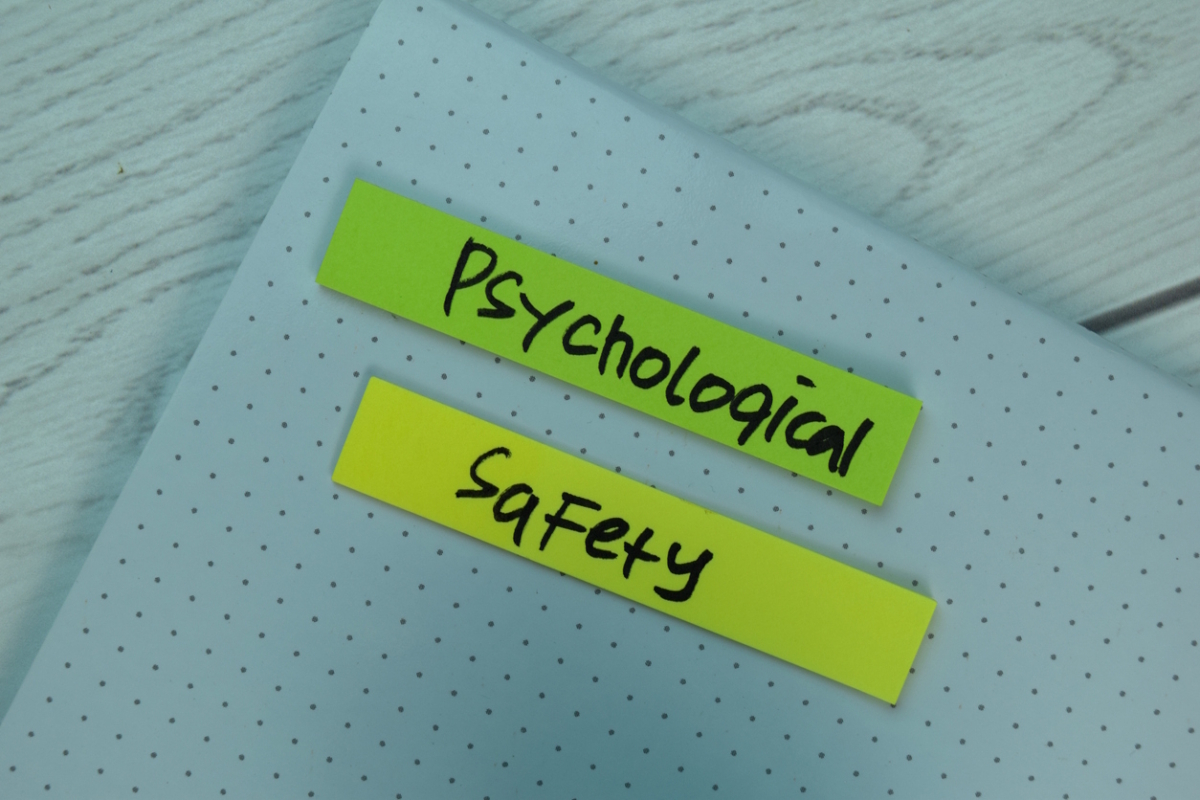Rethinking psychological safety at work
From tick-box to transformation: Gina Battye at the Psychological Safety Institute explains why psychological safety is a business priority and how to get it right

Psychological safety is everywhere in words, yet nowhere in practice. Leaders reference it in meetings and strategy documents, yet workplaces are often still full of misalignment, misunderstandings, and people holding back. For many, it’s just another buzzword; written into values, but absent from culture.
The biggest misconception? That psychological safety is simply about speaking up. Leaders ask employees to share ideas, admit mistakes, or voice concerns, and then assume the job is done. But this view is incomplete, and potentially damaging.
Because psychological safety is far bigger, far deeper. When understood properly and embedded into daily working life, it’s not just a cultural “nice-to-have.” It’s the foundation for stronger performance, real collaboration, and workplaces where people feel resilient, energised, and able to thrive.
What psychological safety really Is
Psychological safety isn’t about telling people to speak up on demand. It’s an individual, moment-to-moment state shaped by environment, relationships, and context. Put simply, it’s about how safe you feel in this moment, with these people, in this environment.
Safety is subjective, contextual, and constantly shifting. One person may share an idea confidently while another feels exposed. Assuming everyone feels safe is risky, and asking people to “speak up” in a hostile setting isn’t empowerment; it’s exposure.
Reducing psychological safety to a “speak-up culture” misses the point. Real safety isn’t about forcing vulnerability; it’s about creating conditions where people can be themselves, connect, and contribute fully.
When these conditions are missing, safety breaks down. People withdraw or only share what feels acceptable. Innovation stalls. Curiosity disappears. Collaboration weakens. Treating safety as a tick-box carries a real cost; to people, teams, and the business.
Why it matters
Let’s be clear: psychological safety isn’t a “nice to have.” It’s a business priority.
When people don’t feel safe, they hold back, avoid risks, and withhold ideas. That silence comes at a cost: less innovation, weaker collaboration, and lower performance.
When people do feel safe, the opposite happens. They’re authentic. They communicate openly. They’re curious, resilient, and willing to engage in meaningful conversations. They collaborate more effectively, and they bring energy and commitment to their work.
The impact is felt at every level:
- Individually: People stop wasting energy masking who they are and focus on doing their best work.
- One-to-one: Conversations become real. Employees feel heard, valued, and respected, even when the topic is challenging.
- Teams: Collaboration deepens. Disagreements become constructive debates, not conflicts. Trust grows.
- Cross-organisation: Silos break down. Knowledge is shared, connections are built, and people work together toward common goals.
- Organisationally: Safety becomes part of the culture. It creates workplaces where people thrive, stay, and grow, while performance improves at scale.
Psychological safety isn’t just a feel-good concept; it directly drives engagement, innovation, and business outcomes.
Authentic vs toxic workplaces
In our work, we see a clear divide between authentic organisations and toxic workplaces.
In authentic organisations, people feel safe enough to bring their authentic selves to work. Communication is open, expectations are clear, and teams are curious, resilient, and collaborative. Leaders model transparency, self-awareness, and thoughtful decision-making. Energy flows through the culture. People feel they belong, and can thrive together.
By contrast, toxic workplaces drain energy. People mask who they are. Conversations are guarded. Feedback is avoided, and leaders say the right words but act differently. Miscommunication and unchecked toxic behaviours drive disengagement, and work becomes a way to pay the bills.
Authentic organisations don’t happen by accident. They’re designed from the ground up to create the conditions where people can do their best work. Psychological safety is the foundation; it’s practical, proactive, and holistic, rooted in people feeling safe, comfortable, and confident.
Authentic cultures treat emotional intelligence, self-awareness, and communication as core capabilities. They nurture curiosity and creativity; the keys to smarter processes, better products, and new revenue streams. With psychological safety embedded in leadership, management, and teamwork, organisations don’t just survive; they thrive together.
Moving beyond tick-box exercises
So, how do you move from surface-level actions to genuine psychological safety? Drop the assumption that safety simply means speaking up. Real safety is subjective and constantly shifting, shaped by environment, relationships, and context. Start there.
At the Psychological Safety Institute, we focus on four principles:
- Start with authenticity. Employees watch what leaders do more than what they say. Be authentic. Show up as a human, set clear expectations, and make it clear that safety is non-negotiable.
- Build self-awareness. Safety starts with individuals. Self-awareness is critical: understanding how you come across, recognising your impact on others, and being mindful of how you communicate.
- Strengthen communication. Communication is the bridge between people. Equip employees with the communication skills needed to thrive in any workplace interaction.
- Create environments where teams thrive. Make safety a cultural norm, not an individual risk. With authentic leadership, clear expectations, and strong communication, teams become trusting, resilient, and innovative. From there, safety scales across the organisation.
These aren’t quick wins. They take commitment and consistency. But the payoff is clear: workplaces where people feel safe, cultures that attract and retain talent, and organisations that perform stronger over time.
A business priority for the future
Psychological safety is too important to be treated as a buzzword. It’s not about an anonymous reporting tool or encouraging people to “speak up.” It’s about creating conditions where everyone feels safe to be themselves and contribute their best work.
Without it, organisations limit performance, stifle innovation, and struggle to retain talent. With it, they create authentic cultures where people thrive, teams perform, and organisations remain resilient.
Psychological safety is the foundation of modern workplace culture. It’s the difference between workplaces that feel heavy, constrained, and toxic, and those that feel human, authentic, and full of possibility.
The future belongs to organisations that treat psychological safety as a business priority. Those that do will not just survive. They will set the standard for what it means to work, grow, and succeed in the modern workplace.
Gina Battye is the founder and CEO of the Psychological Safety Institute and author of The Authentic Organization
Main image courtesy of iStockPhoto.com and syahrir maulana

Business Reporter Team
Related Articles
Most Viewed
Winston House, 3rd Floor, Units 306-309, 2-4 Dollis Park, London, N3 1HF
23-29 Hendon Lane, London, N3 1RT
020 8349 4363
© 2025, Lyonsdown Limited. Business Reporter® is a registered trademark of Lyonsdown Ltd. VAT registration number: 830519543





